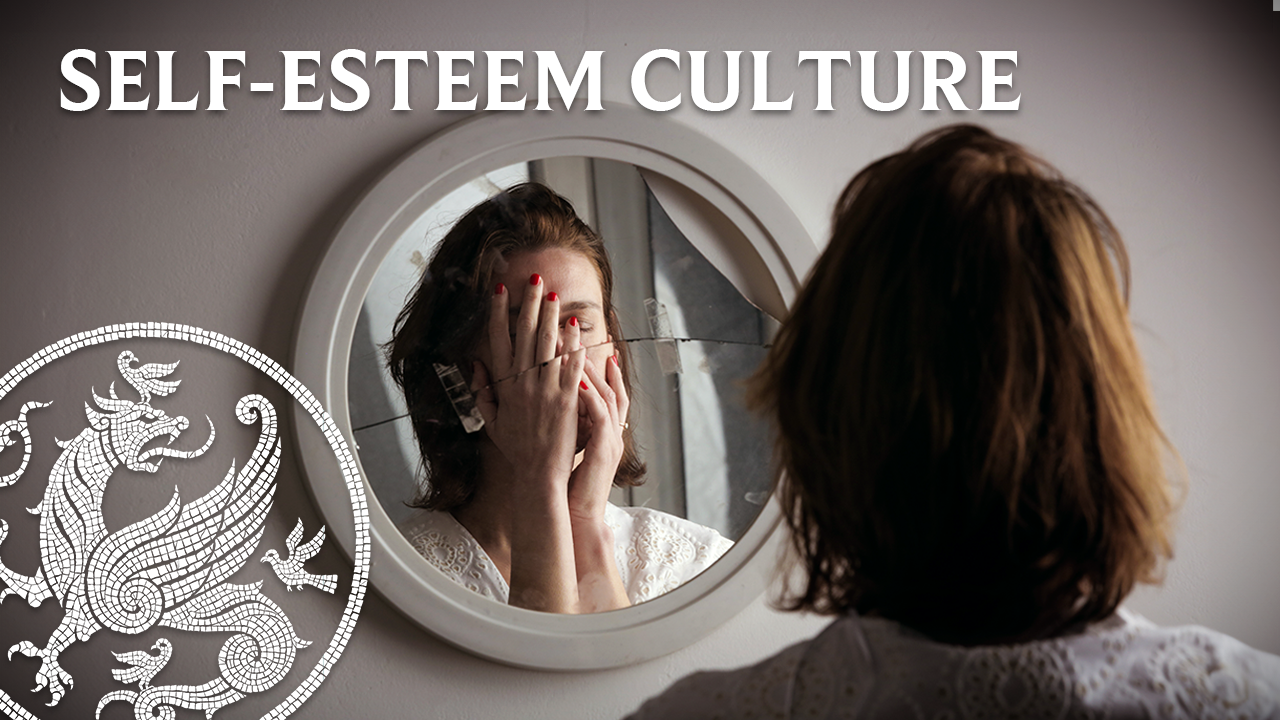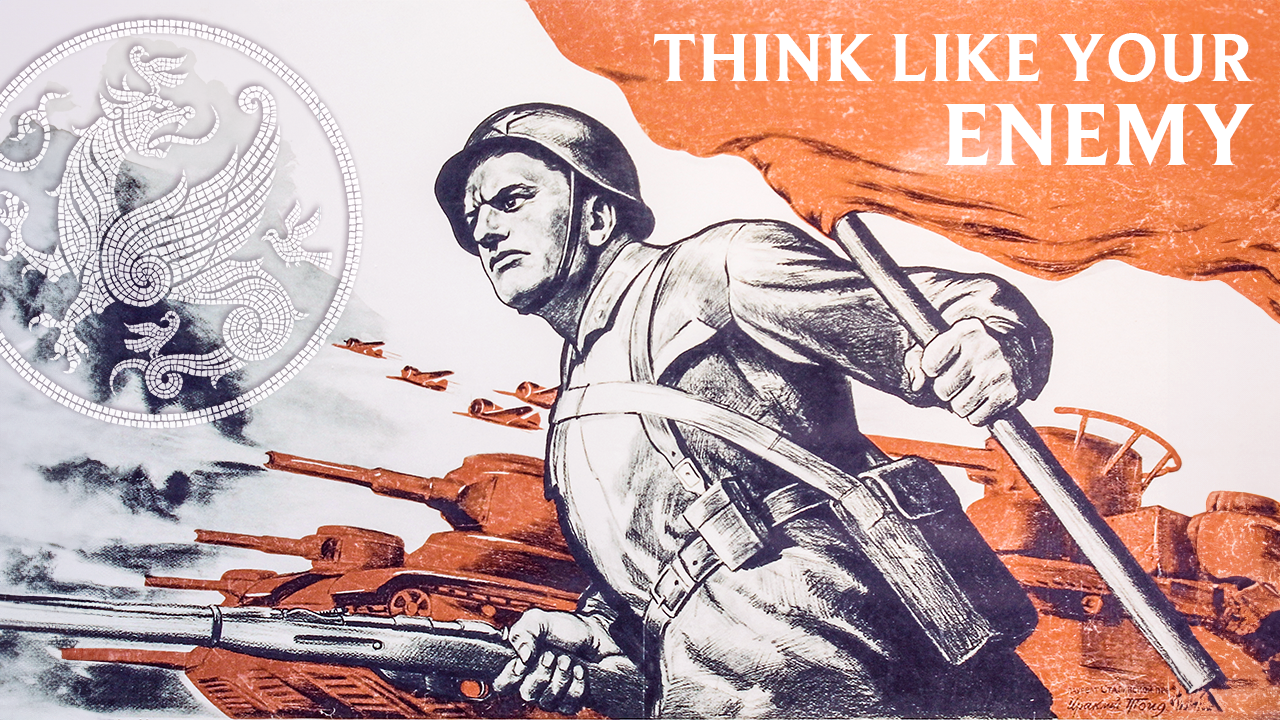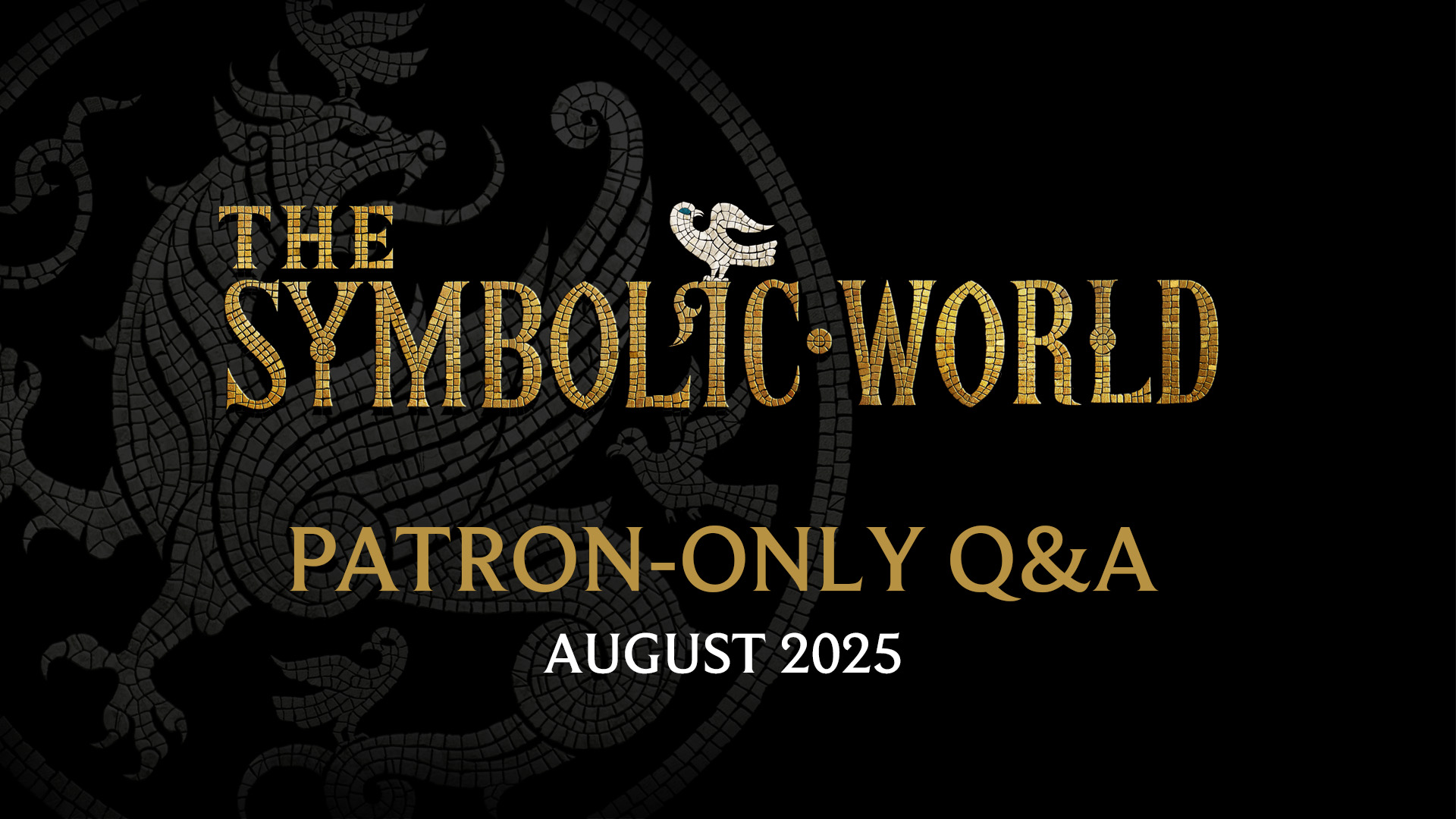Bestiary Introduction, Pt. II: Animals on the Cosmic Mountain

In struggling to expand on my introduction to the Bestiary in an understandable, yet relatively brief fashion, I have realized that the most effective way to do so would be with reference to Jonathan Pageau’s “Cosmic Image.” Here, we find a worthy effort to show the structure of Reality, anchored in the God-man, the ultimate and perfect Union of Heaven and Earth. He is hung atop the Cosmic Mountain, which is surrounded by a wall, and outside the wall is a world of chaos and death. I can’t go into all of the beautiful symbolism contained in this image, nor could I if given the time. For our purposes, we will discuss what one might not at first notice: The Cosmic Image is teeming with animals.
The first animal one notices, but does not necessarily recognize as an animal, is Christ Himself. Contrary to modern assumptions, ancient and medieval man did recognize that human beings are animals, or, more precisely, that human nature shares qualities with that of the beasts. As the Bestiary says, animals are called such “because they are animated by life and moved by breath.”1 Of course, man is not an ordinary animal, but is a union of the seen and the unseen into one person, the meeting place of Heaven and Earth. And Christ, the Second Adam, is this image perfected: He is not only the union of Heaven and Earth into a single Person, but of God and Man, simultaneously divine and human in every way. As this icon profoundly illustrates, because Christ the Divine Logos has taken Creation into His Person, all of Creation becomes an image of Him; the Logos is the Pattern of all things.2 So, in the center of the icon we see the Incarnation, which is the purpose for which all things were made.3 And not only do we find here Incarnation, but also Crucifixion, the Sacrifice of Creation perfected by God, offered up to God. Here is the perfect image of Creation, of how it should be, in perpetual sacrifice, in Eucharist, offered up in gratitude toward God, its origin and completion— “Offering up Thine own of Thine own, on behalf of all, and for all.” And it is by this Eucharistic offering that Creation finds communion with God.
But as we descend the Cosmic Mountain, we see that the way in which Creation was meant to exist is not the way in which it, in fact, does. Just below the Incarnation, there are two more “animals,” the Theotokos, and the Apostle St. John. While these two figures are the icons of human perfection, insofar as it is possible in the present age, they are yet fallen, inheritors of the death we received from Adam’s transgression. Descending further still, we see birds, mostly black, and one of them flying away from the Cross, away from Incarnation. Beneath them, Adam and Eve are tempted by the Devil4 to eat the Fruit of the Tree of the Knowledge of Good and Evil. This is where disintegration, or, perhaps more precisely, disincarnation, begins. It is where God and Creation become alienated, and Adam and Eve must be cast out from the Garden, outside the walls. And here, we find more animals—the gargoyles on the walls, playing a similar role to the cherub, which guards the gate to the Mountain, and is, itself, a kind of bestial fusion. Then, beyond the buffer of mixture and strangeness, the goats and the sheep; and finally, the Leviathan, the ultimate liminal creature, who lurks farthest away from the Center in the depths of the roiling sea, and is the most unlike man.
The organization of the Bestiary, the placement of particular animals in particular chapters, has long been a source of debate among scholars.5 While to a modern scientific person, the structure seems largely arbitrary, various bestiaries written in various places at various times were composed with a similar structure. For example, the Lion is almost always the first animal that is discussed, and the Whale, or a related creature, is almost always the last, or close to it. In our time, the most intuitive way of organizing something like a compendium of beasts would be alphabetically, or by level of evolutionary development, as a modern encyclopedia of dinosaurs and prehistoric creatures might be organized. Some scholars argue that a given bestiary was simply organized according to the tradition in which it was received, and much emphasis has been placed on the supposed unoriginality of the copiers of bestiaries, but that begs two questions: Why was the tradition received this way? And why was it not changed according to a more intuitive structure? This would certainly make it easier to locate a desired animal if it were simply meant to serve as some kind of field manual for studying them.
While we can’t expect medieval people to be as thoroughly systematic as us modernists in a digital world, and though there are still questions that arise with this view, one can find that the Bestiary does in fact have a coherent structure. I believe the organization of the Bestiary is best understood hierarchically, and that the icon of the Cosmic Mountain can help in seeing this hierarchy. Indeed, the Bestiary presents itself as having an organizational principle behind it: In the Physiologus, the chapter on the Lion opens with, “We begin first of all by speaking of the Lion, the king of all the beasts.” And so, in the center of the Garden, we have the King of flesh and spirit, and at the beginning of the Bestiary, we have the King of the beasts. The cosmic hierarchy is represented pictorially in a number of traditional icon types and images. One of these is the image of Noah’s Ark. In the icon below, this is demonstrated quite clearly. After Noah himself, a blameless man in his generation, come the other human passengers, then the Lion, and the Elephant, which in the Bestiary is an image of unfallen mankind. Next are the birds, then the dumb beasts of burden, and finally, outside the Ark, the monsters that dwell in the sea. It just so happens that this is almost identical to the way the bestiary M.S. Bodley 764, which in many ways is the exemplary bestiary text, is organized. It begins with a description of Adam naming the beasts (and Noah is a kind of second Adam), then opens with the Lion, closely followed by the Elephant, and finally ending with a section on all the bizarre and terrifying creatures of the deep, who are furthest from both man’s rule and the Lion’s.
And yet, symbolism cannot be as systematic as we might like. Not only do we find differences in hierarchical representations of the cosmic order, but also, a single animal within the Bestiary itself might have both positive and negative associations. One of the best examples of this is the Snake, which is in the same “class” as the Serpent, the Dragon, and the Basilisk—all terrifying and evil creatures, and all frequently illustrated as winged and legged serpents, despite the text distinguishing serpents from lizards on account of the former’s lack of feet—again, systematization and technicality were not priorities for the medieval mind. But the snake also has more positive connotations. It is said that the Snake, when it becomes old and its eyes grow dim, will fast for many days so that its skin grows loose. Then, it will find a fissure in a rock and wriggle through to rid itself of its old skin, thus renewing itself. This is a type of Baptism, which historically was preceded by a long period of fasting. The initiate is brought through the Rock which is Christ, and in so doing puts the old man to death and becomes a new creature.6
Here we see a hope that is expressed in the icon of the Cosmic Mountain—the hope that all of Creation, even the Snake itself, can be renewed through Christ. As the rivers of Eden watered the whole world, so the Blood of Christ gives life to what had become corrupt through sin, bringing even the waters of chaos and the serpents that dwell within into communion with God. So here we see the ultimate goal of the Bestiary. We are shown the cosmic hierarchy itself within the animal world, we are shown what each level of this hierarchy means, and we are shown what the aim of this hierarchy is in the broader eschatological sense: renewal, redemption, and union with God, the reintegration of the material and the immaterial that is made possible by the Incarnation.
Linked Articles & Posts
Linked Premium Articles & Posts
- Bestiary, Barber, 19.
- Pageau, Jonathan. “Designing an Image of Everything,” at paragraph 3. Orthodox Arts Journal, July, 2020
- Pageau, Jonathan. “The Incarnation Wasn’t Just a Reaction of God to the Fall – Jonathan Pageau and Collective Wisdom,” at 0:50. YouTube, August, 2020
- In Greek, the word “Diabolos,” from which we derive our English word “Devil,” may indicate a throwing apart or dividing—the destruction of symbol and the definition of “disintegration.”
- Crane, Susan. Animal Encounters: Contacts and Concepts in Medieval Britain, at 69-70. University of Pennsylvania Press, 2013
- Author unknown, Barber, Richard, tr. Bestiary MS Bodley 764, at 196. The Boydell Press, 2016.
MEMBERSHIP
Join our Symbolic World community today and enjoy free access to community forums, premium content, and exclusive offers.



.svg)



.svg.png)







Comments